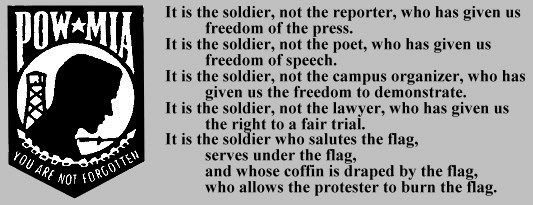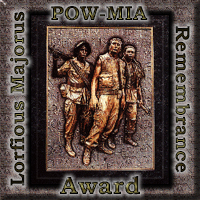

In Memory of Capt. Doyle Robert Sprick, USMC
 Name: Doyle Robert Sprick
Name: Doyle Robert Sprick
Rank/Branch: O3/US Marine Corps
Unit: VMFA 315, MAG 11
Date of Birth: 29 November 1932
Home City of Record: Ft. Calhoun NE
Date of Loss: 24 January 1966
Country of Loss: South Vietnam
Loss Coordinates: 161900N 1073900E (YD830065)
Status (in 1973): Missing in Action
Category: 4
Acft/Vehicle/Ground: F4B
Other Personnel in Incident: Delmar G. Booze (missing); on another F4B same
date, same coordinates: Albert Pitt, Lawrence N. Helber (both missing)
SYNOPSIS: Capt. Doyle R. Sprick was the pilot and 2Lt. Delmar G. Booze his
navigator/bombadier on board an F4B Phantom fighter jet flying out of Da
Nang Airbase, South Vietnam on January 24, 1966. Sprick and Booze were part of a
multi-aircraft strike mission during a Christmas moratorium. At some point
during their mission, while over Thua Thien Province, South Vietnam and
about 10 miles south of the city of Hue, the aircraft flown by Sprick and Booze
went down. Both men were declared Missing in Action.
Another F4B, apparently on the same strike mission, was downed at the same
location on that day. This aircraft was also flying out of VMFA 314, 11th
Marine Air Group, and presumably departed Da Nang as well. The second
Phantom was flown by Capt. Albert Pitt, accompanied by navigator 2Lt. Lawrence N.
Helber. This aircraft disappeared after striking a target. The last contact
with the aircraft was a report that their strike on the target had been
successful. Helber and Pitt were declared Missing in Action.
All four Marines lost that day were also given a clarifying code indicating
the degree of enemy knowledge of their fates. These four were all classified
Category 4, which means U.S. Intelligence has no information to indicate
that the Vietnamese know their fates.
According to Doyle Sprick's twin brother, Duane, searches were conducted for
the aircraft which were extensive and thorough for the time and condition.
The Da Nang area, according to Duane, was unfriendly, so the search and rescue
was fairly restricted since the area was "owned by the Viet Cong at the time."
In 1969, the Central Intelligence Agency received a rather extensive and
detailed report relating to a POW camp near the city of Hue in which scores
of Americans had been held. When asked to review photographs of Americans still
missing, the source giving the information positively identified Albert Pitt
as having been detained in this camp. This identification was made on April 11,
1969. The source also listed the Viet Cong Huong Thuy District Committee
members and provided sketches of the committee's headquarters and POW camp.
The U.S. intelligence community determined that it could not "be determined
why the source selected (Pitt's) photograph" as he "was never seen by other US
POWs following his loss incident". The source was summarily dismissed, and his
information discounted. The report was classified.
Over 15 years later, this report was unearthed by a concerned citizen
through the Freedom of Information Act. He immediately contacted the family of one
of the men on the "positive ID" list, and was shocked to learn that they had
never been told of the report's existence, nor did they have any clue that their
son could possibly have been captured.
Since that time, the lengthy report was distributed widely, and came into
the hands of two of the men whose name appeared on the "Positive ID" list who
had been fortunate enough to be released in 1973 by the North Vietnamese. These
returned POWs verified the accuracy of the report insofar as the compound
was concerned and added that it was a "way station", or temporary holding center
in which POWs were held only for brief periods of time. Thus, they were not
surprised to see many names on the list of men they had not seen at this
facility.
Since American involvement in the Vietnam war ended in 1975, nearly 10,000
reports concerning Americans missing in Southeast Asia have been received by
the U.S. Government. Less than 200 of them have been determined to be false, or
fabricated reports. Many have been correlated to individuals who returned to
the U.S. in 1973. In late 1989 about 125 cases were still under
investigation, undergoing the "closest scrutiny" the U.S. intelligence community could give
them. Thus far, according to the U.S. Government, it has not been possible
to resolve these cases as false or true. Many authorities are convinced that
hundreds of Americans are still being held prisoner in Southeast Asia.
If Albert Pitt was accurately identified by the Vietnamese source in 1969,
he has been criminally abandoned by the country he proudly served. If Albert
Pitt could be forgotten and be held unseen by other American POWs, why not
Sprick? Booze? Helber? Why not several hundred of the nearly 2500 still missing? If
they are alive, why are they not home? Are we doing enough to learn the
fates of our heroes?

How can you help???

Click on the image




